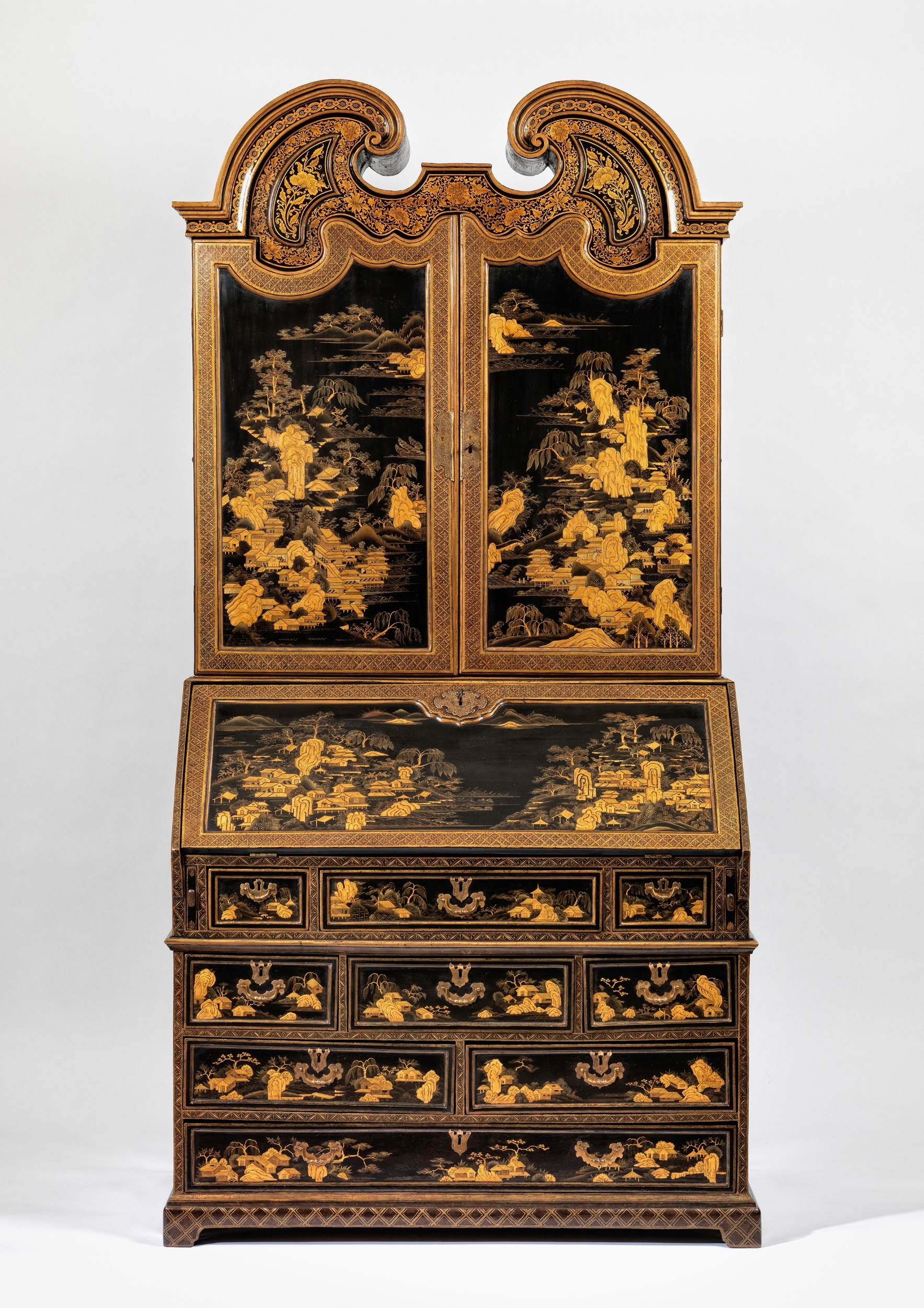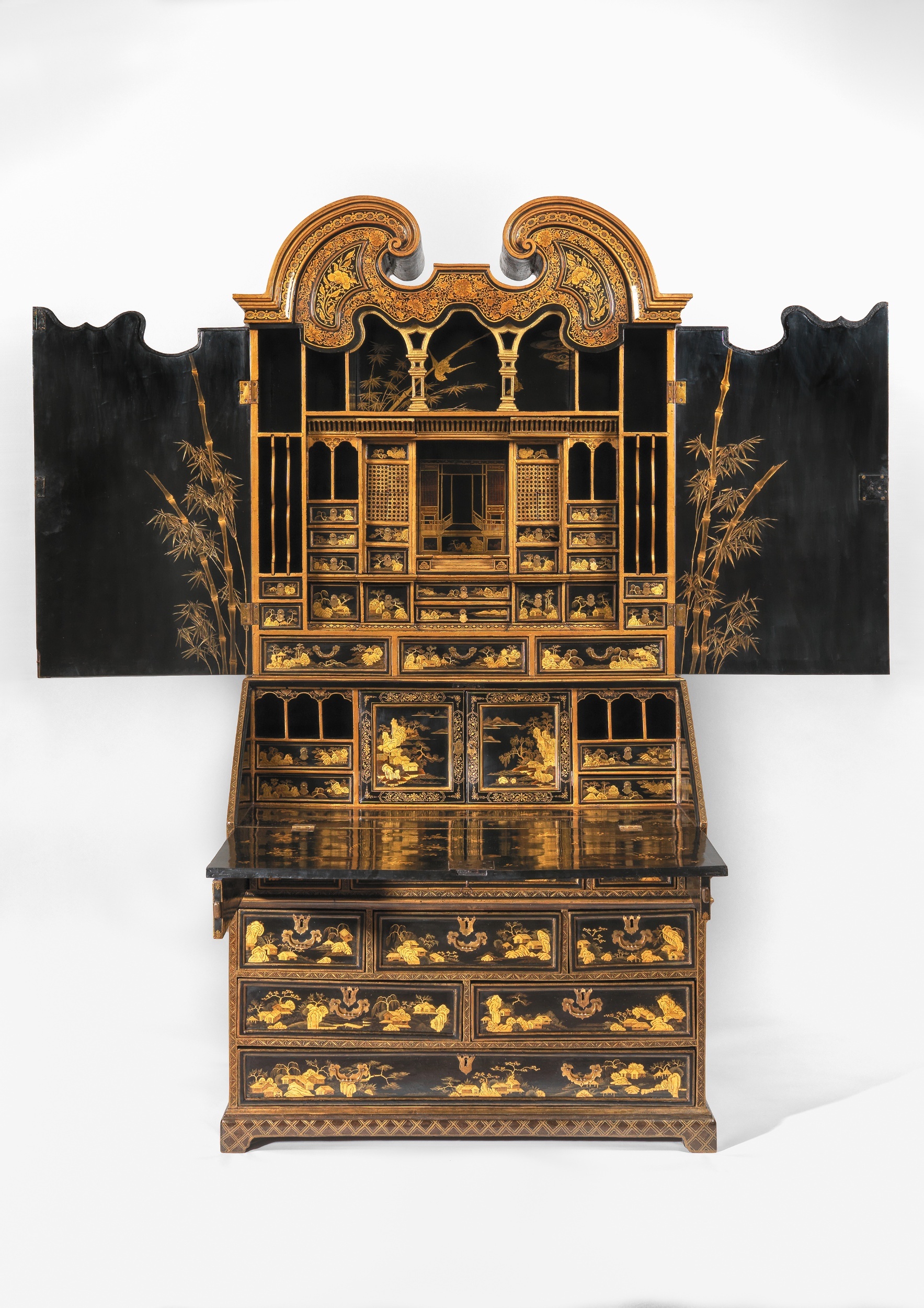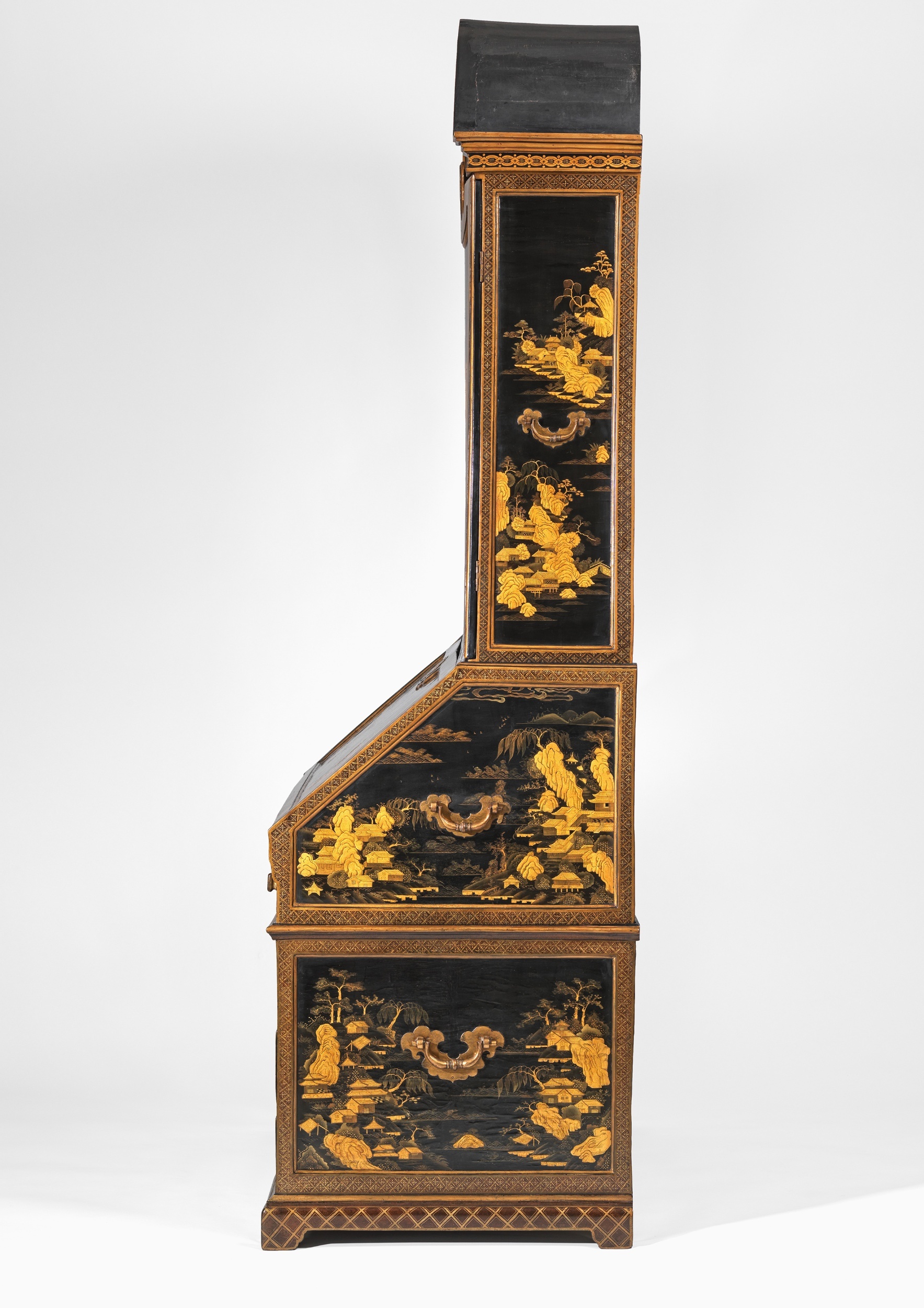





Circa 1735






The elaborate design of this cabinet shows how Chinese craftsmen were able to master the complex forms of European furniture, with its arrangement of compartments and drawers which had an exotic appeal in the West. The palette of black and gold is not typically Chinese but imitates Japanese lacquer, which was expensive and difficult to procure in the 18th century.
This bureau cabinet was made in Canton (Guangzhou) in southern China, which in the 18th century became the principal – and later the only – trading port at which Europeans were permitted to buy Chinese goods. A formalised commercial system developed there, and Chinese merchants and artisans became increasingly familiar with western tastes and demands. A pair of cabinets now in the Royal Castle of Fredensborg in Denmark were acquired by Christian IV for the Royal Collection in 1738 from Captain Guillame de Brouwer of the ship Sleswig. This ship had first visited Canton in 1734 under the auspices of the Royal Danish Asiatic Company. Besides the main cargo of tea, porcelain and silk, each seaman, according to rank, was allowed to return to Denmark with decorative goods, which he was able to sell by private treaty. Captain Brouwer obviously purchased the pair of cabinets sold to Christian IV in this way on his voyage of 1736-37, as he personally sold them to the king, the bill of sale describing them as “Scrip Contours” or writing cabinets. In 1744 one was described in an inventory as a black lacquered Chinese chest of drawers with a secretary desk and above a cupboard with three small gilded figures on the top.
R. W. Symonds, Old English Walnut and Lacquer Furniture 1923 pp 166-167 Collection of Lord Plender, The Victoria and Albert Museum in the Asian Department item 019112. The Safra sale Sothebys’s New York 19thOctober 2011 Lot 715, Mallett Millenium Page 133, Lacquer An International History and Collectors Guide.
| DIMENSIONS | CM | INCHES |
|---|---|---|
| Width: | 113 | 44.5 |
| Depth: | 68 | 26.5 |
| Height: | 226 | 89 |